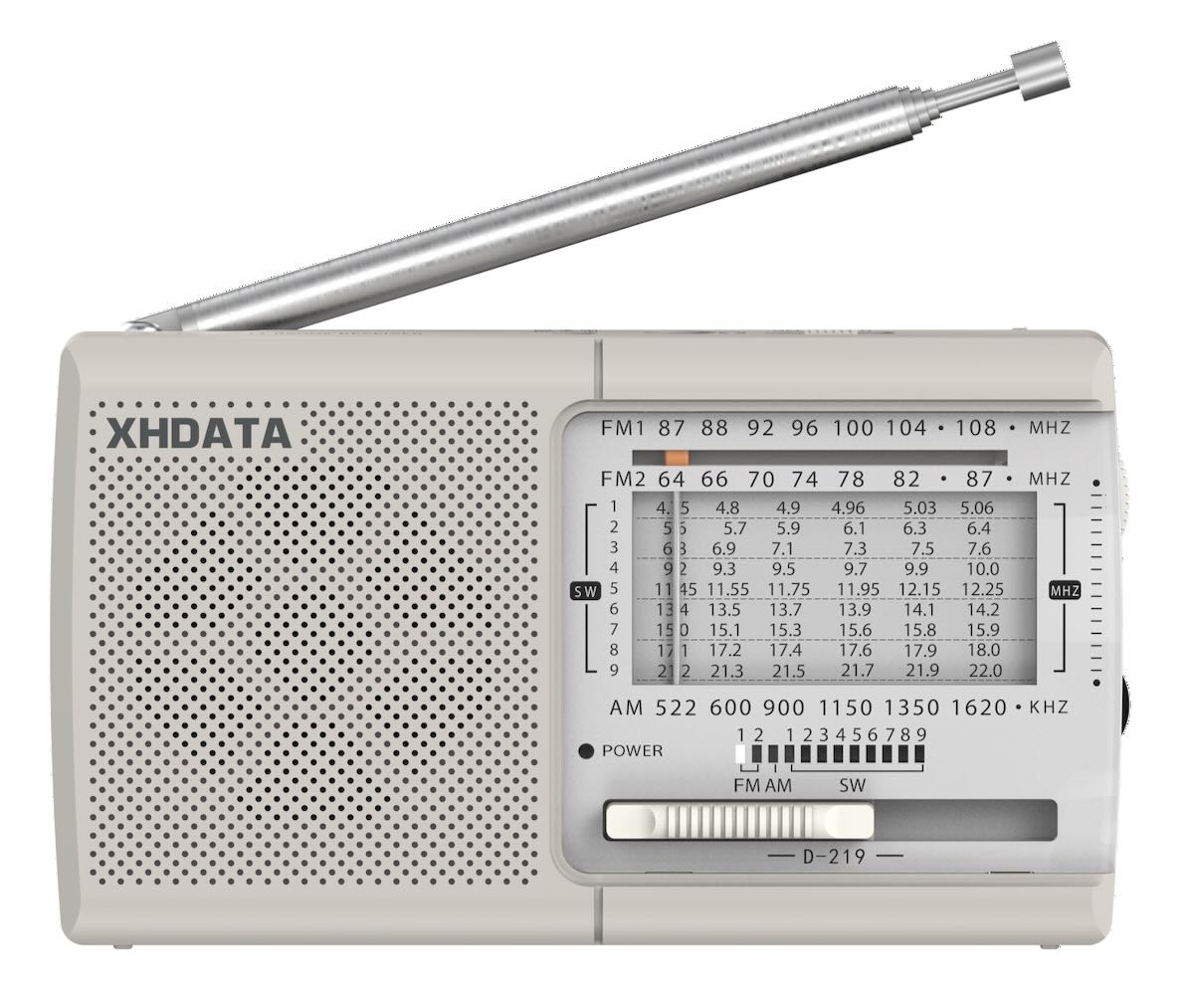Many thanks to SWLing Post contributor Paul Jamet, who shares the following article:

The XHDATA D-219 Receiver Gets a New Look
by Paul Jamet
Two and a half years ago, I shared my enthusiasm for an XHDATA receiver, the D-219, first launched at the end of 2022:
Read: Paul explores the incredible affordability of the XHDATA D-219
The XHDATA D-219 stands out for its low price and impressive performance. It combines nostalgic analog charm—with its needle dial—with the power of modern DSP technology, delivering excellent multiband performance for its class and cost. Whether you’re an enthusiast, a traveler, or simply discovering shortwave for the first time, the D-219 is a wonderful gateway into the vast world of radio.
More than 25 readers have commented on or contributed to discussions about this little receiver. The D-219 is very easy to use, has a vintage look, a classic needle dial, and runs on two AA batteries. Sources confirm that it is based on a Si4825-A10 architecture, with analog tuning (via potentiometer and voltage), mono audio output, and reception across the following bands:
- FM1: 87–108 MHz (International band)
- FM2: 64–87 MHz (East Asia)
- AM (MW): 520–1710 kHz (10 kHz spacing) or 522–1620 kHz (9 kHz spacing, depending on version)
- SW: 9 shortwave bands covering 4.75–22 MHz
Switching between bands is simple—just turn the side-mounted dial.
Recent events have also renewed interest in battery-powered radios and resilient technologies like AM radio, particularly during massive power outages such as:
In such emergency situations, the D-219 becomes even more appealing: it’s lightweight (150 g without batteries), very intuitive to use, and powered by standard AA cells. On top of that, its performance is excellent.
Until recently, XHDATA offered the D-219 in just two classic colors: gray and silver-gray.
 But in the past few days, XHDATA has introduced two new finishes on its website: malachite green and grayish white—still under €9 (excluding shipping). Stocks appear to be limited.
But in the past few days, XHDATA has introduced two new finishes on its website: malachite green and grayish white—still under €9 (excluding shipping). Stocks appear to be limited.

Personally, I was immediately drawn to the Malachite Green version.

 Its matte finish looks elegant and really highlights the receiver’s craftsmanship. Honestly, I think it’s beautiful! The green gives it a distinctive character and elevates the quality of the finish.
Its matte finish looks elegant and really highlights the receiver’s craftsmanship. Honestly, I think it’s beautiful! The green gives it a distinctive character and elevates the quality of the finish.
Elegance, performance, and price all come together to make the D-219 an excellent way to discover—or rediscover—shortwave across its nine bands.
With the D-219 ‘Malachite Green,’ radio isn’t just something you hear—it’s something that catches your eye.
















